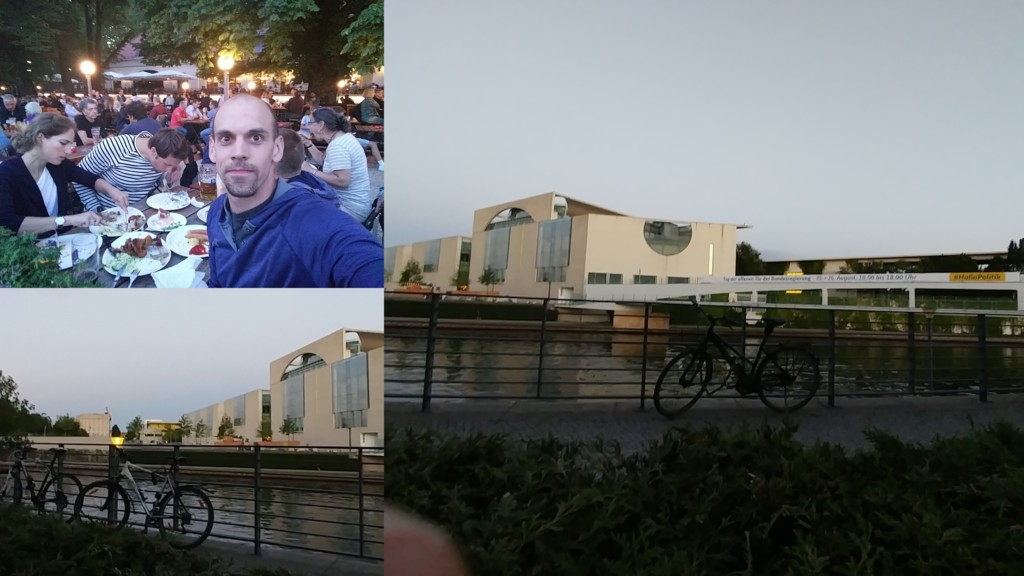Like I mentioned last time, day 11 was a driving day, from Vienna to Berlin. We justified “giving up” a day of our trip behind the wheel for three reasons: it was somewhat en route to returning the car in Brussels, it was mostly unrestricted autobahn driving, and it was MOSTLY UNRESTRICTED AUTOBAHN DRIVING!!!!!
Missed the beginning of the trip? Start here.
The Detour
The most direct route from Vienna to Berlin would have been north through the Czech Republic, via Prague and Dresden, but that route would be verboten as far as our rental agreement was concerned. We contemplated just going for it anyways, but the insurance document in the glove box gave us pause. One of the few things printed in English was “NOT VALID IN” followed by a list of countries, including “CZ”. Violating the rental agreement might be a breach of contract, but driving without insurance would likely be criminal and might have subjected the car to impoundment. Not something we wanted to risk.
So we’d simply “drive around” a whole country. It would change our trip from 680km to 895km. That’s 215km, or more than 130 miles, of extra driving. In other words, just over an hour.
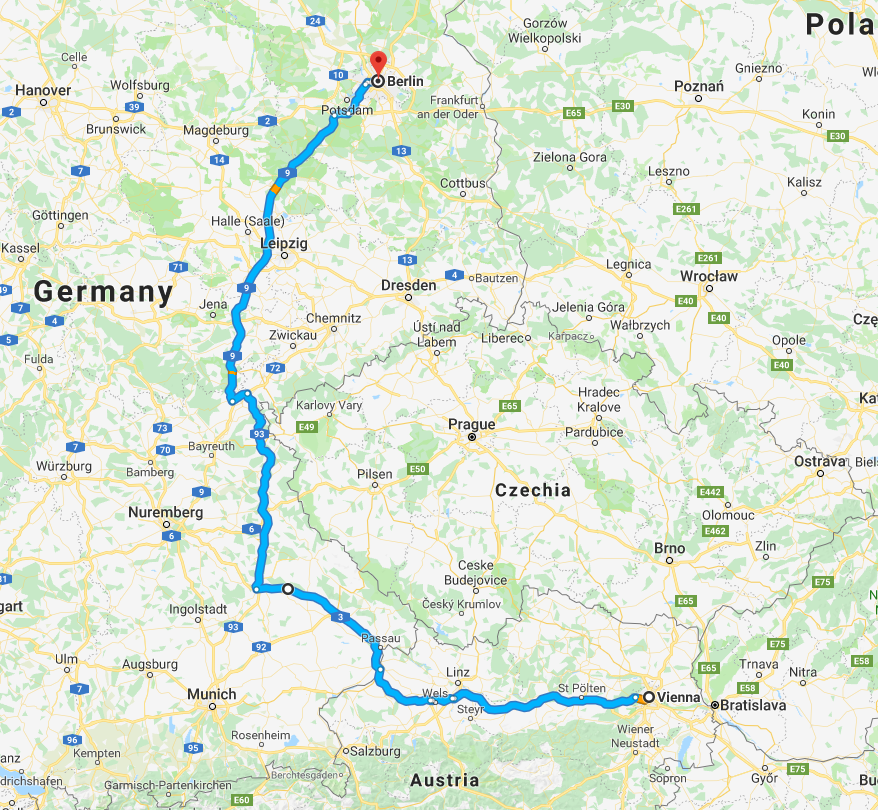
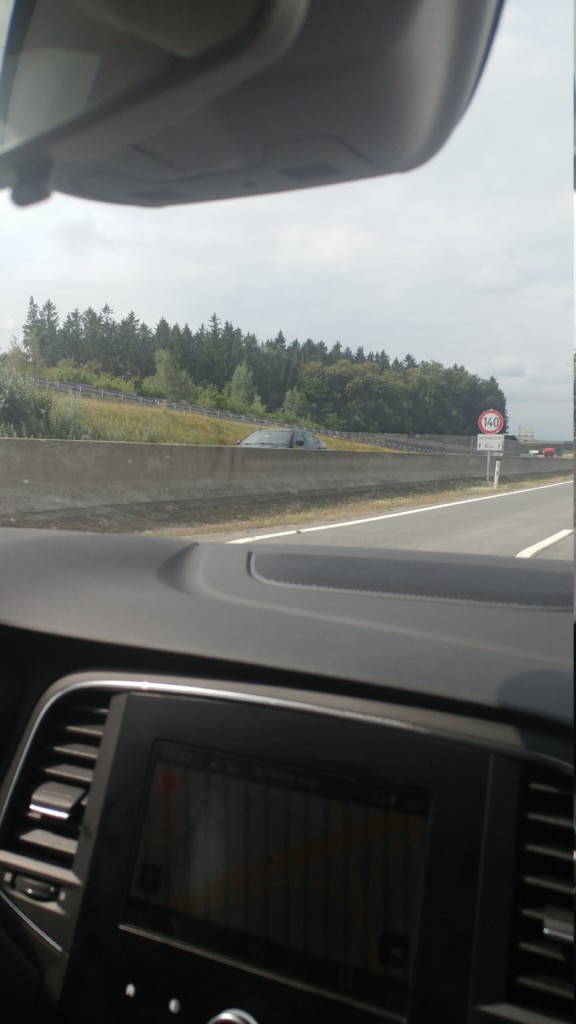
How bad could that be? Well, we already knew that the week-old speed limit increase covering most of Austria meant legal cruising at 140km/h (87 mph), and that at least some of Germany would be unrestricted. But how much? There’s a website for that, with an interactive map showing where we could drive without fear of the speed police.

The map shows at least half of our intended route in green. Considering what cities were served by the route, we figured it wouldn’t be too heavily traveled once in Germany, with ample opportunities to let all 110 French horses loose.
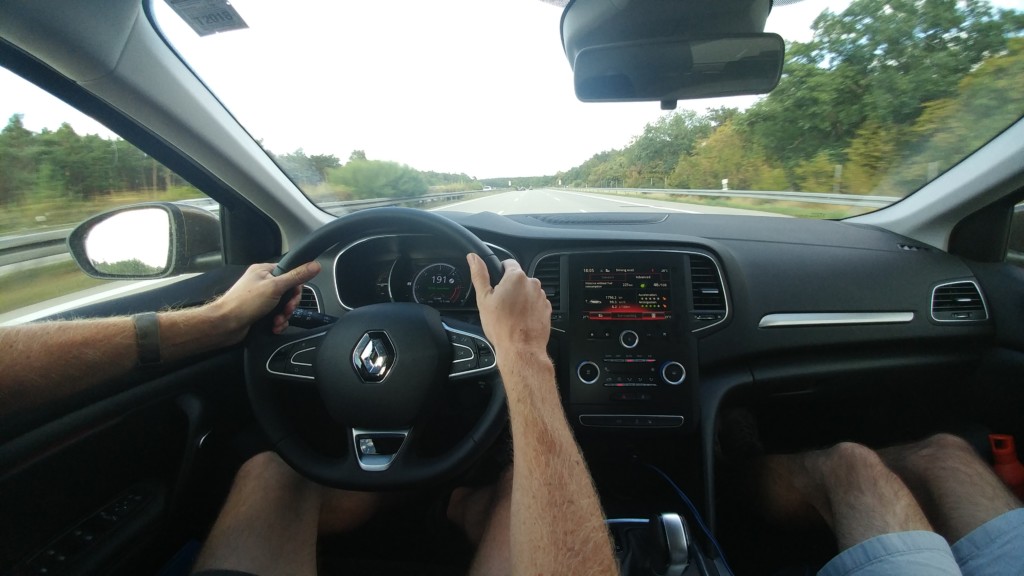
A Few Words about Speed and Safety
Yes, I’m an engineer. Yes, I’m a car guy. And yes, I’m a nerd. There probably aren’t too many people that can out-do me when it comes to traffic safety stats. And there are far too many that point to speed as the cause of harm in fatal accidents when the truth is far different.
I won’t bore you with all of the details here–it deserves a series of posts all its own–but I’ll point out a things:
- Even with no speed limits, Germany’s limited access highways are safer than ours by any objective measure. Fatality rates are far lower on a per-mile traveled basis, on a per capita basis, and a per-vehicle basis.
- Despite a requirement for driver’s education, Germany’s program is much less regimented than what most US states have implemented today. Many older drivers here may not have had 30 classroom hours and 6 on the road before getting a license, but a new driver today gets much the same amount of instruction time as a new German driver. Prior to 2013, German licenses were good for life, no renewal or retesting. Now in compliance with EU directives, they’re required to be issued for 10 or 15 years.
- Germany doesn’t use photo enforcement, even where speed limits are only 50 mph on the autobahn. It’s incredibly rare to see the polizei on freeways. On any given cross-country trip here, you’d expect to see at least several state troopers, sheriffs, or local police cars making traffic stops. In several thousand miles in Germany, we saw exactly one, not counting 3 or 4 helping with tire changes.
- Fines for speeding in Germany are minimal, and Germany uses a points system for repeat offenders similar to most US states. Like certain states, fine schedules are unified–it doesn’t matter which particular road or police agency writes the ticket in determining the penalty. Less than 20 km/h (12 mph) over a rural limit carries no points, and it would take 8 tickets at 20-40 km/h (12-24 mph ) over for a license suspension. Compare that to Virginia or NC where one ticket at 10 over in a 70 mph zone carries a suspension, or typical systems in other states where a suspension occurs after 2-4 tickets in that speed range. The only states that match Germany for leniency with speeding are New Mexico and South Dakota.
- German highways are generally better maintained than U.S. interstates. Potholes and frost heaves are extremely rare, though overall pavement quality is comparable to certain southern states. Germany uses lots of concrete, and usually replaces an entire section of road when problems develop, where we’d usually just fill the hole with asphalt.
Are German drivers generally more obedient, courteous, attentive, or skilled? In general, absolutely not. Flagrant violation of speed limits, traffic lights, parking rules, and the like is far more noticeable in a city like Berlin than in New York City, Charlotte, Chicago, or LA.
But that doesn’t mean that the autobahn isn’t far more pleasant to drive. Because of the speed, it’s less common to find someone in the left lane oblivious to their obstruction. Oblivious drivers might do a better job of keeping right, but not really. Like here, you’re often forced to pass on the right if you want to get around someone, even though you and the law would prefer passing on the left. On the autobahn, however, that person in the left lane isn’t going 66 passing someone going 65, where both drive those speeds at the edge of the law. Instead, other drivers–even far slower ones–cooperate to help avoid rolling roadblocks. Left-lane hogs are still ever present, but their damage to safety and the flow of traffic is limited.
License and Registration?
Just like in the US, you need a driver’s license, but like here, your license from back home is good enough. It’s what allows a Spanish-speaking-only driver from Nicaragua to drive through Kansas en route to Quebec, just like an English-only RVer can legally drive across Germany. That means while trying to keep up at 120 mph, you’re also trying to figure out what certain less-common road signs say. Trying to have your copilot search for a translation for “Straßenschaden” takes long enough that it often isn’t worth the effort. The pothole the sign was referring to was unnoticeable by rust belt standards and nevertheless a mile or more behind us by the time we had the translation.
You might want to think that signs are standardized across the EU–some are, but many aren’t. Countries like Germany also rely heavily on unposted, statutory restrictions (we have the same thing here with speed limits, but generally post them anyways, especially on major roads). You may go for 50 miles without seeing a speed sign, and rarely get warnings in advance of a speed reduction. They’re also incredibly small, even for someone with good eyes driving normal American speeds. The minimum size for a speed limit sign is generally 450mm, or 17″ in diameter. In the US, we require 24×30″ as a minimum for conventional roads, and 48×60″ on freeways. That’s fifty times the area!
It might seem to make driving in Germany intimidating, but it isn’t. Regardless of the rules of the road, most people there (as here) only have a rudimentary understanding. The average number of miles driven by a car-owning driver in Europe is roughly half what it is here–and a good portion of those miles are vacationing in other European countries, where they haven’t been schooled on the rules. While other European countries have different attitudes and fine structures, at least in Germany there’s quite a bit of freedom, responsibility, and safety on the motorways.
Back to our trip…
Most of the drive was quick and uneventful. Lots of cruising at 100-120mph speeds, lots of typical slowdowns with road construction, a little bit of rain, beautiful scenery, and interesting cars traveling with us. As we got close to Berlin, we were reminded that there’s plenty in common with Atlanta. Both cities depend heavily on cars for commuting, both have a ring road or beltway around the city, and both of those highways are full of stop-and-go traffic at 5 o’clock on a Friday.
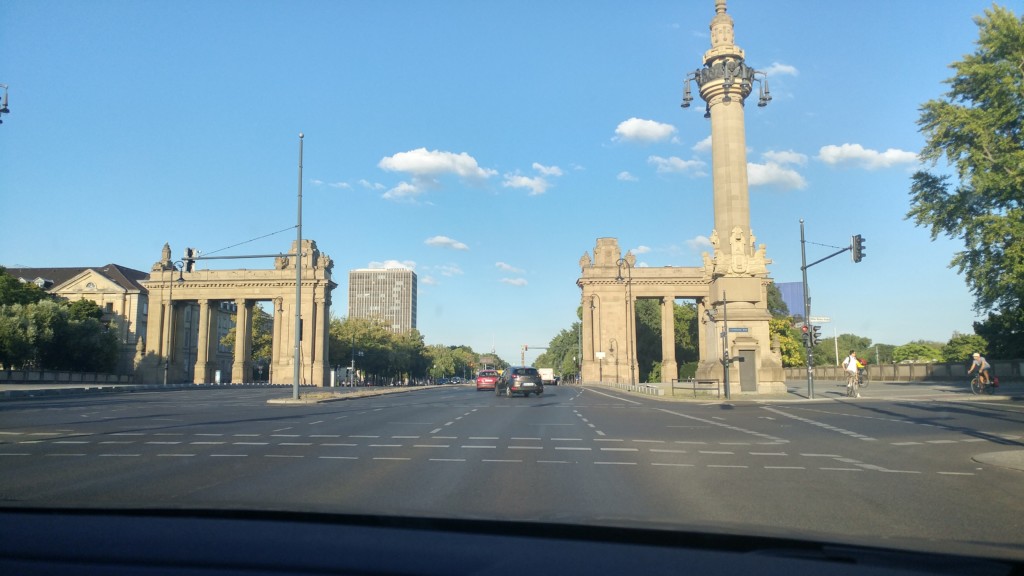
In navigating to our destination, we got off the freeway and headed into town on Bundesstraße 2, a wide surface boulevard straight as an arrow from the ring road right into the center of Berlin. It looked like the quickest route to our apartment, but also happened to be an awesome introduction to the city. We passed the technical university, through the Tiergarten, and right past the Brandenburg Gate before turning north.
We booked a 2-bedroom, 2-bath apartment in Moabit, just north of the Tiergarten on Airbnb. It was pretty well furnished, in a typical older, mostly stone and concrete building with high ceilings and large windows, and set us back a little over $200 for the weekend stay. We arrived in time for dinner, freshened up, and set out on foot for dinner.
On recommendation of the only real German-speaker amongst us, we walked to Zollpackhof, a beer garden with lots of good food, and an atmosphere that couldn’t have been better. We were right along the Spree, with a view of the Chancellery, sitting around a century-and-a-half old chestnut tree. The beer garden dates to 1855, and offers a neat mix of more formal dining inside, and the incredibly laid-back feel where we ate outside. Like the film festival in Vienna, there was no disposable food service stuff in sight.
Afterwards, we walked back to the apartment and turned in for the night.
| Today | 562 mi | 0 mi | 0 mi | 5.6 mi |
| Total | 2,132 mi | 3,814 mi | 134.0 mi | 49.9 mi |
